In the realm of SEO, understanding user intent is crucial for success. When you grasp what your audience is searching for and what they hope to achieve, you can tailor your content and optimize your website accordingly. By acknowledging user intent, you can enhance your website’s visibility, increase organic traffic, and ultimately drive more conversions. This article will guide you through the process of understanding user intent in SEO, providing valuable insights and practical tips for improving your website’s performance. So, let’s get started on unraveling the mysteries of user intent!
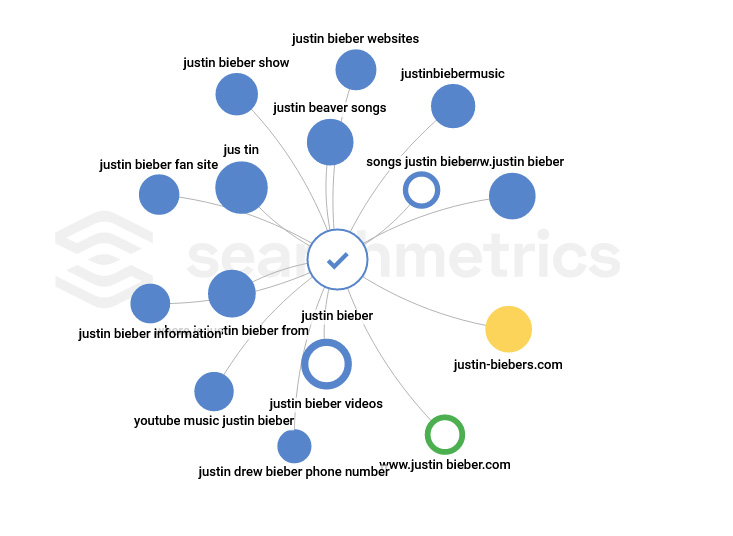
This image is property of cdn.searchmetrics.com.
What is User Intent?
User intent, also known as search intent, refers to the specific goal or intention that a user has when performing a search query on a search engine. It is the underlying motivation behind a user’s search, and understanding user intent is crucial for businesses and marketers in order to create relevant and valuable content that meets the needs and desires of users.
Definition of User Intent
User intent can be classified into four main categories: informational, navigational, transactional, and commercial investigation. Each type of user intent represents a different user goal and requires a distinct approach in order to effectively optimize for it.
Importance of User Intent in SEO
Understanding and optimizing for user intent is essential in improving search engine optimization (SEO) efforts. By aligning your content and website with the user’s intent, you can increase the relevance and visibility of your website in search engine results pages (SERPs), attract more targeted organic traffic, and improve user engagement and conversions.
Types of User Intent
Informational User Intent
Informational user intent refers to users seeking information or answers to specific questions. These users are looking for educational, informative content that provides them with valuable insights, explanations, or solutions to their queries. Optimizing for informational intent involves creating in-depth, authoritative content that answers the user’s questions in a clear and concise manner.
Navigational User Intent
Navigational user intent occurs when users are looking for a specific website or brand. These users already have a destination in mind and are conducting a search to navigate directly to that website. To optimize for navigational intent, it is important to have a well-structured website with clear navigation and branding, ensuring that users can easily find and access the desired website.
Transactional User Intent
Transactional user intent refers to users who are ready to make a purchase or carry out a specific action. These users are looking for commercial offerings, such as products or services, and may search for specific details, pricing, or purchase options. Optimizing for transactional intent involves creating persuasive, conversion-focused content that highlights the benefits, features, and value propositions of your products or services.
Commercial Investigation User Intent
Commercial investigation user intent occurs when users are researching and comparing different products or services before making a purchase decision. These users are looking for information, reviews, and recommendations to help them evaluate their options. Optimizing for commercial investigation intent involves creating comprehensive, unbiased content that compares and analyzes different products or services, helping users make informed decisions.
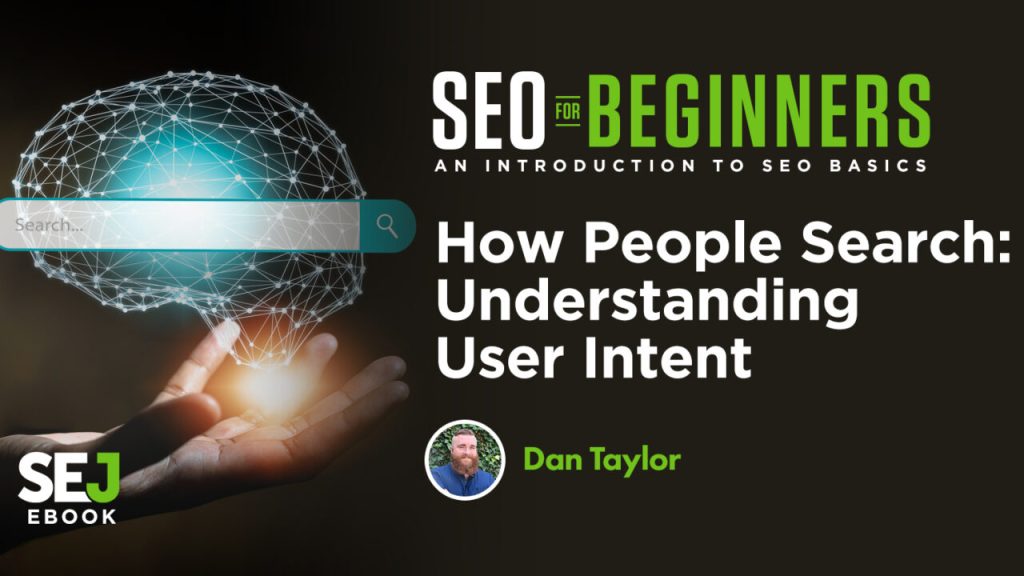
This image is property of www.searchenginejournal.com.
Identifying User Intent
Understanding and identifying user intent is essential for creating effective SEO strategies. Here are some methods and tools to help you understand user intent:
Keyword Research
Keyword research is a fundamental step in identifying user intent. By analyzing relevant keywords, search volume, and competition, you can gain insights into what users are searching for and their intent behind those searches. Look for keywords that are closely related to your products, services, or industry and match them to the user intent categories.
Analyzing SERPs
Analyzing SERPs, or search engine results pages, can provide valuable information about user intent. Examine the types of content that appear on the first page of search results for your target keywords. This can give you an idea of the content format, structure, and optimization that aligns with user intent.
User Demographics and Psychographics
Understanding your target audience’s demographics and psychographics can provide insights into their needs, preferences, and motivations. Conducting market research, analyzing customer behavior data, and creating buyer personas can help you identify user intent more accurately.
Analyzing Search Query Language
The language and phrasing used in search queries can provide insights into user intent. Analyze the search queries related to your target keywords and pay attention to specific words, phrases, or question formats that indicate different types of user intent. Utilize tools like Google Trends or keyword research tools to identify these patterns.
Tools for Understanding User Intent
Several tools can assist in understanding user intent and optimizing your SEO strategies accordingly. Here are a few key tools:
Google Analytics
Google Analytics provides valuable data about user behavior, demographics, and interests, helping you gain insights into user intent. Analyze metrics such as bounce rate, session duration, and goal completions to understand how users interact with your website and whether they are finding the information they are seeking.
Google Search Console
Google Search Console provides data on search queries that drive traffic to your website. This information can help you identify user intent, as it shows which keywords and queries are leading users to your site. Additionally, it provides data on impressions, click-through rates, and average positions in SERPs.
Keyword Research Tools
Keyword research tools like SEMrush, Ahrefs, or Moz can provide valuable insights into user intent. These tools allow you to discover relevant keywords, analyze search volume and competition, and gain a better understanding of the intent behind specific keywords.
Social Listening Tools
Social listening tools, such as Brandwatch or Hootsuite, can help monitor online conversations and discussions related to your industry or brand. By analyzing social media content, comments, and mentions, you can gain insights into what users are talking about, their needs, and their intent.
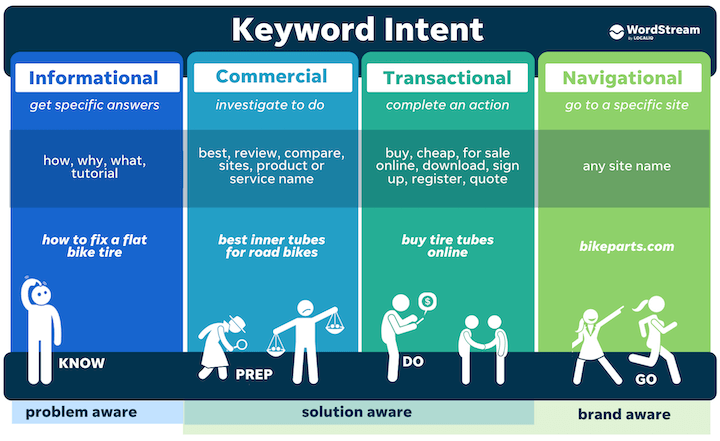
This image is property of www.wordstream.com.
Creating User-Centric Content
Once you have identified user intent, the next step is to create user-centric content that meets the needs and expectations of your target audience.
Mapping User Intent to Content
Map each type of user intent to specific content formats and topics. For informational intent, create informative blog posts, articles, or guides. For navigational intent, create landing pages that provide clear information about your brand or website. For transactional intent, create product pages or landing pages that highlight the benefits and features of your products or services. For commercial investigation intent, create comparison articles or reviews.
Creating Relevant and Engaging Content
To effectively engage users, your content needs to be relevant, valuable, and engaging. Ensure that your content is well-researched, up-to-date, and provides unique insights or solutions to the user’s queries. Use clear and concise language, include relevant visuals and examples, and make the content easy to read and understand.
Optimizing Content with Target Keywords
Optimize your content with target keywords that align with user intent. Incorporate these keywords naturally throughout your content, including in headings, titles, meta descriptions, and body text. However, avoid keyword stuffing and maintain a natural flow of the content.
Providing Value and Unique Selling Points
To differentiate yourself from competitors and provide value to users, highlight your unique selling points (USPs) in your content. Clearly communicate the benefits and advantages of choosing your products or services. This can help users understand why your offerings are the best fit for their needs and encourage them to take action.
Optimizing for User Intent
To optimize your website and content for user intent, consider the following factors:
On-Page Optimization
Optimize your web pages by ensuring that they are properly structured and include relevant meta tags, headings, and URLs. Use descriptive and keyword-rich titles and meta descriptions to capture user attention in the search results.
Improving Page Load Speed
Page load speed is crucial for a positive user experience. Users expect fast-loading websites, and slow loading times can result in high bounce rates and poor rankings. Optimize your website’s performance by minimizing code and image sizes, enabling browser caching, and using a reliable hosting service.
Mobile-Friendly Experience
With the increasing use of mobile devices, it is essential to provide a seamless and mobile-friendly experience. Optimize your website for mobile devices by using responsive design, ensuring that your content is easily readable and navigable on smaller screens, and optimizing page load speed for mobile users.
Clear and User-Focused Navigation
Having a clear and user-focused navigation structure is important for helping users find the information they are looking for. Use intuitive menus, clear labels, and hierarchical structures to guide users through your website and make it easy for them to navigate between pages.
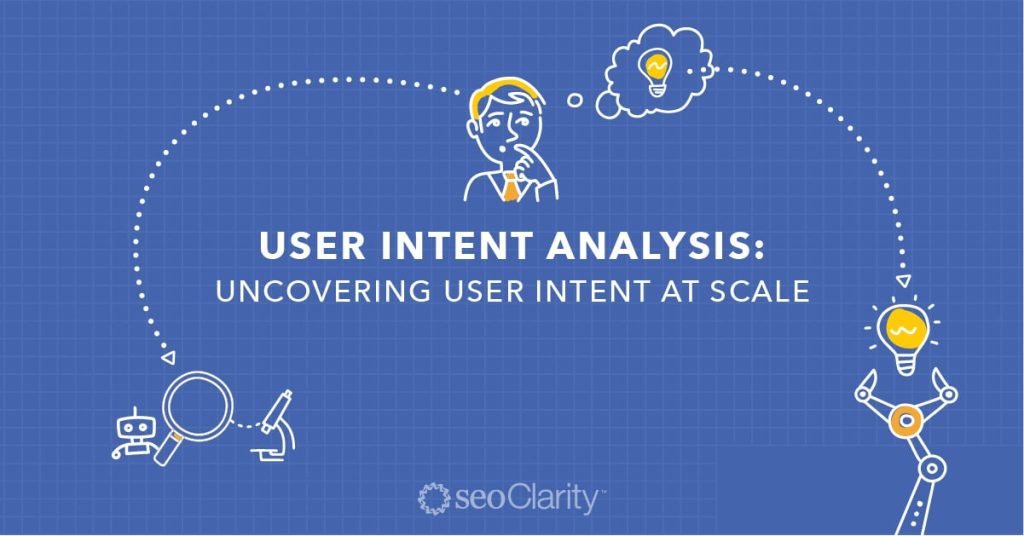
This image is property of www.seoclarity.net.
Measuring and Analyzing User Intent
To measure and analyze user intent, consider the following methods and tools:
Monitoring Metrics and KPIs
Monitor relevant metrics and key performance indicators (KPIs) to gain insights into user intent. Track metrics such as organic traffic, time on page, bounce rate, and conversion rate to understand how users interact with your website and whether they are achieving their goals.
Analyzing User Behavior
Use tools like Google Analytics, heatmaps, or click tracking to analyze user behavior on your website. These tools can provide insights into user navigation, click patterns, scroll depth, and areas of interest. By understanding how users interact with your website, you can make informed decisions to improve user intent optimization.
Conversion Tracking
Track and analyze user conversions to gain insights into how well your website or content is meeting user intent. Set up conversion goals and track the number of completed goals, such as form submissions, purchases, or downloads. This data can help you understand which areas of your website or content are effectively driving user actions.
Heatmaps and Click Tracking
Heatmaps and click tracking tools like Hotjar or Crazy Egg can provide visual representations of user interactions on your website. These tools can show where users are clicking, how far they scroll on a page, and areas that receive the most attention. By analyzing this data, you can optimize your website for better user intent.
User Intent and Voice Search
With the rise of voice-enabled devices and virtual assistants like Siri and Alexa, user intent in search has evolved. Here’s how user intent relates to voice search:
Impact of Voice Search on User Intent
Voice search has changed the way users search and interact with search engines. Voice queries are often longer and more conversational, reflecting natural language queries. Understanding the impact of voice search on user intent is crucial for optimizing content for voice search.
Optimizing for Voice Search
To optimize for voice search, focus on long-tail keywords and natural language queries. Consider the questions users might ask when conducting a voice search and incorporate those phrases into your content. Use featured snippets and structured data to provide concise, direct answers to potential voice queries.
Understanding Natural Language Queries
With voice search, users tend to use more natural language and colloquial language in their queries. Understanding and incorporating these natural language queries into your content can help you align with user intent and improve your visibility in voice search results.
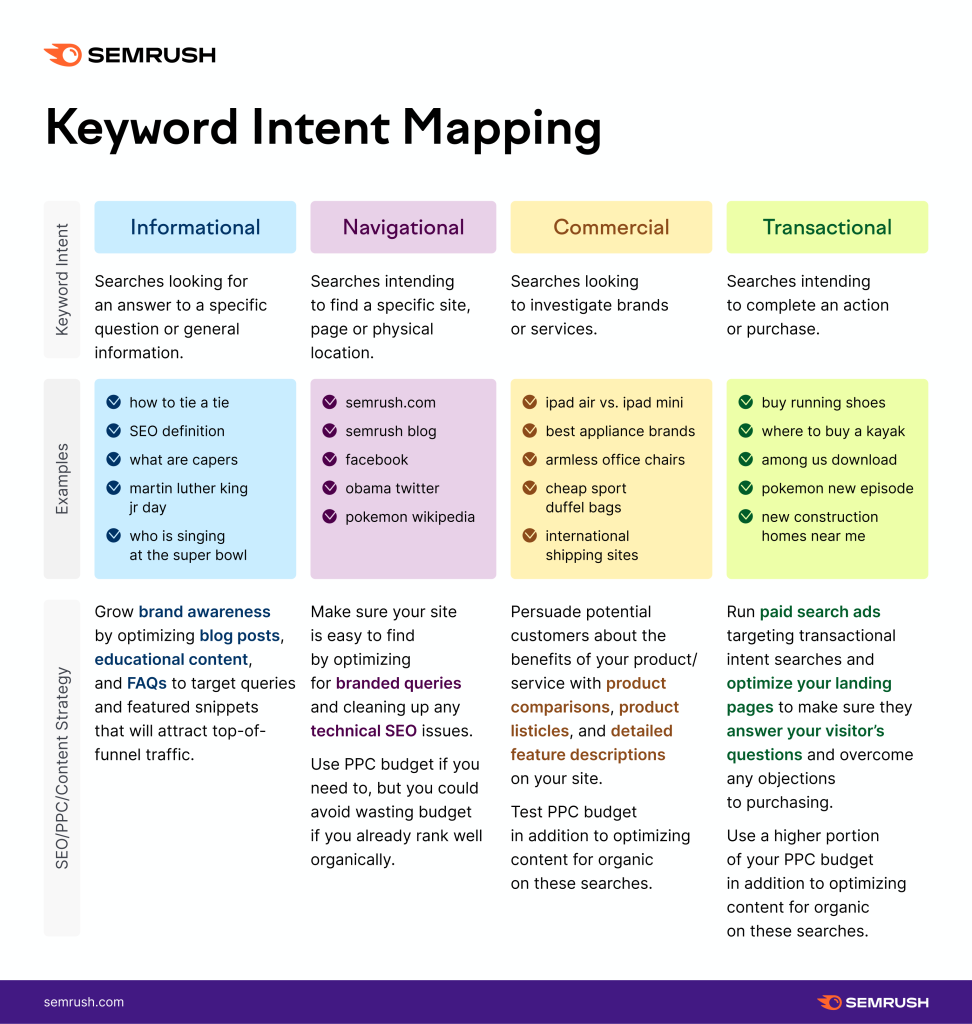
This image is property of static.semrush.com.
User Intent and Local SEO
For businesses targeting a specific geographical area, understanding and optimizing for localized user intent is key. Here’s how user intent relates to local SEO:
Localized User Intent
Localized user intent refers to the specific needs and desires of users in a particular location. Users may search for location-specific information, such as local businesses, services, or events. Understanding localized user intent can help businesses tailor their content and SEO strategies to their target local audience.
Google My Business Optimization
Optimize your Google My Business (GMB) listing to enhance your visibility in local search results. Ensure your GMB profile is complete and up-to-date, including accurate contact information, business hours, and customer reviews. Regularly update your GMB listing with posts, offers, or events to attract local users and improve your chances of appearing in localized search results.
Localized Content
Create localized content that addresses the specific needs and interests of your target local audience. Incorporate location-based keywords and phrases in your content, including city names, neighborhoods, or landmarks. This can help you rank higher in local search results and attract users who are specifically looking for information or services in your area.
Building Local Citations
Building local citations involves getting your business listed on local directories, review sites, or other relevant platforms. This can help improve your local SEO and visibility in localized search results. Ensure that your business information is consistent and accurate across all citations, including your business name, address, and phone number (NAP).
User Intent and E-commerce SEO
Understanding user intent is particularly important for e-commerce businesses looking to optimize their website and product listings. Here’s how user intent relates to e-commerce SEO:
Product Page Optimization
Optimize your product pages to align with user intent and improve your chances of ranking higher in search results. Use descriptive and keyword-rich product titles and include clear and compelling product descriptions that address the needs and desires of potential customers.
Clear Product Descriptions
Provide detailed and informative product descriptions that address the user’s questions and concerns. Highlight the unique features, benefits, and value propositions of your products. Include relevant information such as specifications, dimensions, materials, and care instructions to help users make informed purchase decisions.
User Reviews and Ratings
Including user reviews and ratings on your product pages can help build trust and credibility with potential customers. Positive reviews can also influence user intent and encourage users to make a purchase. Encourage satisfied customers to leave reviews and actively respond to customer feedback to further enhance your reputation.
User-Friendly Checkout Process
Optimize your checkout process to streamline the user experience and minimize barriers to purchase. Ensure that the checkout page is clear, secure, and easy to navigate. Offer multiple payment options, provide shipping and return information, and include trust symbols or security badges to instill confidence in users during the checkout process.
In conclusion, understanding user intent is crucial for businesses and marketers in order to create relevant and valuable content, optimize for search engines, and meet the needs and desires of users. By identifying user intent, utilizing the right tools, and employing effective optimization strategies, businesses can attract targeted organic traffic, improve user engagement, and drive conversions.







